And now for something completely different. In the first two editions of this new column, we delved into the black world of conspiracy theories. In this edition, we are going to lighten things up a bit and migrate to what will be another major topic in Room 101: cult television shows and how they relate to the esoteric.
We start with what is the longest running science fiction television series in the world and, in my opinion, also the best ... Doctor Who. For those people that do not own a television set and haven't had the time to read the novelisations, Doctor Who is about the adventures of a mysterious alien known simply as "the Doctor." With his companions, the Doctor explores time and space in his travel machine the TARDIS (Time And Relative Dimension In Space), encountering danger, solving problems and righting wrongs wherever he goes.
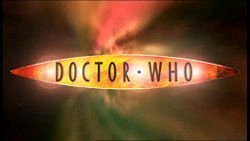
I first became a fan of Doctor Who when my father bought me a video of Genesis of the Daleks, written by Terry Nation. It tells the story of how the Doctor's greatest enemies, the Daleks, were created millennia ago on the war devastated planet Skaro by the evil genius Davros. To this day, it is my favourite Doctor Who story and, as a child, it triggered my first major interest in science fiction and the possibility of intelligent life elsewhere in the Cosmos.

If I had to narrow it down to one single thing that got me interested in esoteric subjects in the first place, it would have to be watching repeats of Doctor Who while I was growing up. The writers of the series would often take inspiration from the realms of the esoteric and, in its original 26 season run, everything from bug eyed aliens to the lost city of Atlantis and the Loch Ness Monster would make an appearance. There are far too many examples of how esoteric subjects were tied into Doctor Who to write about them all, so here are just some of my favourites ...
Death to the Daleks, again by Terry Nation, is an excellent example of how the esoteric was tied into Doctor Who. In this story, the Doctor is drawn to the planet Exxilon, where he must outwit the native savage Exxilons and a crew of stranded Daleks in order to survive.
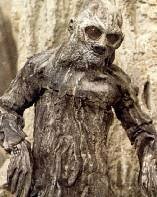
It looks like the description of the Greys, short with grey skin and big black eyes, might have played a big part in the design of the Exxilons costumes. This is interesting because the story was first broadcast back in 1974, three years before that image of what an alien should look like was made so popular by the release of Steven Spielberg's Close Encounters of the Third Kind in 1977.
Also the writers seem to have taken a lot of inspiration from Erich von Däniken's Chariots of the Gods and the ancient astronaut theory. At one point in Death to the Daleks, the Doctor goes as far as stating that he believes that the ancient Exxilons, who we learn were far more advanced, travelled to Earth and taught the Peruvian Incas how to build their great temples. In an earlier story, The Dæmons, the Doctor tells us that another advanced race of aliens, the Dæmons from the planet Dæmos, came to Earth 100,000 years ago in order to help mankind's development as part of some scientific experiment.
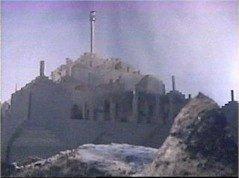
As well as the ancient astronaut theory, Mars anomalies also seem to have inspired the writers of Doctor Who. One story, written by Robert Holmes, is even called Pyramids of Mars. In this story, it is revealed that the ancient Egyptian Gods were inspired by a race of powerful aliens called the Osirans, the last of whom, Sutekh the Destroyer, is imprisoned in the Great Pyramid of Mars.

The lost city of Atlantis is another major esoteric subject that is tied into a number of Doctor Who stories. In The Dæmons, after learning about the many wars and atrocities mankind has committed against their own people, Azal, last of the Dæmons, warns the Doctor that: "My race destroys its failures. Remember Atlantis."
In two other stories, the Doctor even visits the lost city itself. In the The Time Monster, the Doctor travels back in time before Atlantis was struck by disaster and we learn that Atlantis was part of the Minoan civilisation (which is a real life theory still advocated by some today). This is anoter sign that the writers were very much inspired by the esoteric and the ideas circling it. In an earlier story, The Underwater Menace, the Doctor discovered that some Atlanteans had survived the sinking of Atlantis and had continued to live beneath the waves in isolation from the rest of humanity into modern times (perhaps, in a small way, echoing some of the ideas that would evolve into Mac Tonnies' cryptoterrestrial hypothesis).

However, by far the best two examples of Doctor Who stories that incorporate elements of what would become the cryptoterrestrial hypothesis are Doctor Who and the Silurians and its sequel The Sea Devils, both by Malcolm Hulke. Both stories centre on an ancient super intelligent race of reptiles that evolved on and dominated the Earth when man was nothing more than a primitive ape. After resting in hibernation deep underground and beneath the sea for millions of years, they awake only to discover that the apes have evolved into man and now rule their world. Very interestingly, Doctor Who and the Silurians was first broadcast in 1970 the same year Ivan T. Sanderson's Invisible Residents: The Reality of Underwater UFOs was first published. This book hypothesised that perhaps an advanced aquatic non-human civilisation may have evolved right here on the Earth, much in the same way as the Silurians and Sea Devils of Doctor Who did.
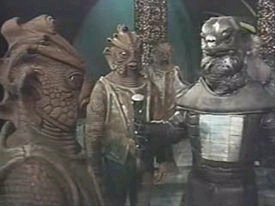
Ivan T. Sanderson was also well known for his books on cryptozoology (a word Sanderson himself coined in the early 1940s), in particular, books on Lake Monsters, Sea Serpents, Mokèlé-mbèmbé, Yeti, and Sasquatch. All of these creatures, in some form or other, would make an appearance in Doctor Who. For instance, in Terror of the Zygons, the Doctor encountered the Zygon Skarasen at Loch Ness, Scotland, the creature was clearly the Loch Ness Monster. In Invasion of the Dinosaurs, we saw a number of prehistoric beasts in modern London, among them a Brontosaurus, perhaps an ancestor of Mokèlé-mbèmbé. Finally in The Abominable Snowmen and its sequel The Web of Fear, both written by the team of Mervyn Haisman and Henry Lincoln (one of the co-authors of the controversial 1982 bestseller The Holy Blood and the Holy Grail), the Doctor is threatened by a small army of alien robots disguised as Yeti.
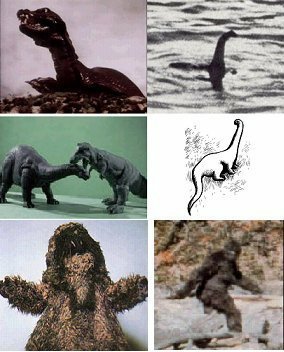
So clearly the writers of Doctor Who were inspired by and tied a lot of esoteric type subjects into the stories. So what?
Well, one of the big question issues Tim Binnall keeps raising in BoA: Audio is the lack of young people in Ufology and some other esoteric subjects. Perhaps the best way to solve this problem is to get children interested in science fiction first. Let them learn about these esoteric mysterious through fiction, then, as they grow up, they will come looking for the truth behind the fiction. The first documentaries about UFOs and the Yeti that I probably watched were episodes of Arthur C. Clarke's Mysterious World and the reason I watched them was because I had heard about UFOs and the Yeti on Doctor Who!

If this theory is correct then Ufology and other esoteric subjects have nothing to fear, the new series of Doctor Who is going strong with millions of very young fans. With that growing fanbase, we can be hopeful that in a few years they, too, will discover our esoteric world.
Richard Thomas, BoA UK Correspondent and Columnist.
